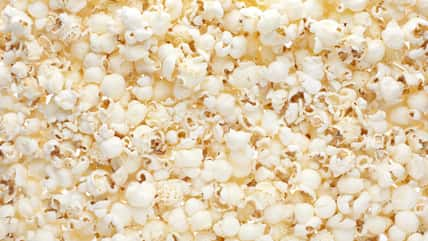Experts Are Working To Remove A Strange Substance Growing Inside A Bronze Cannon That Was Used In The Battle Of The Alamo

A strange substance has been growing inside an 18th-century bronze cannon that was used in the Battle of the Alamo, and a team of experts has been working diligently to remove it. The preservation effort was led by specialists from Texas A&M University’s anthropology department.
They thought the chalky, white substance could be from chemicals used in previous conservation efforts. It only showed up on the weapon recently and was a rare occurrence. The team applied a special acid solution to the historically significant artifact to eliminate the substance.
“This is a really interesting cannon. It has a long and exciting story, especially from Texas history,” said Kimberly Breyfogle, a Ph.D student in the Texas A&M Nautical Archaeology Program.
Currently, the cannon is housed at the Museum of the Alamo. It is a historic Spanish mission and fortress compound originally established by Roman Catholic missionaries in the 18th century. It is located in present-day San Antonio, Texas.
According to Breyfogle, the Alamo was built as a mission in the 1700s under Spanish colonial rule. It was meant to evangelize local Native Americans. After it stopped functioning as a mission, it was used for medical and military purposes.
The most famous historical event that happened in Texas is the Battle of the Alamo. It lasted from February 23 to March 6, 1836. The battle took place during the Texas Revolution, which spanned from 1835 to 1836. It was a rebellion of U.S. colonists and Tejanos (Hispanic Texans) against the Mexican government.
Mexican forces won the Battle of the Alamo, but ultimately, the revolution led to a split from Mexico and the founding of the Republic of Texas in 1836. Later, in 1845, the United States annexed the republic.
As for the cannon, its origin is unclear. Research suggests that it was most likely made in the 1760s in what is now Mexico. Then, it was sent to Los Adaes, the capital of Spanish Texas at the time, which is located in Louisiana today. It was used as needed in several notable battles.
Aside from the Alamo, the cannon is thought to have been used in the Battle of Medina in 1813 during the Mexican War of Independence (1810–1821). The conflict was fought between the Spanish colonial government and the people of Mexico. In addition, the cannon saw the Battle of Concepción in 1835, which is considered the first major fight of the Texas Revolution.

Davivd – stock.adobe.com – illustrative purposes only
There is evidence of damage to the cannon. For example, a number of parts are missing, such as the trunnions and the cascabels.
After its defeat at the Battle of San Jacinto in 1836, the Mexican Army destroyed and buried its cannons to prevent the Texan Army from using them. The cannon with the white, chalky substance is likely one of them.
If the substance had been left unchecked, it might have permanently ruined the artifact beyond repair.
The team spent nearly a year and a half trying to figure out why the substance was growing and how to get rid of it.
“It turns out this might be a byproduct of the chemicals used in the cannon’s conservation process back in 2008 and again in 2019,” said Christoper Dostal, an assistant professor of anthropology at Texas A&M University. “The substance is a precipitate of these chemicals starting to crop up on the outside of the cannon.”
To determine how to remove the substance safely, Dostal and colleagues created small bronze ingots and applied similar chemicals to them. Then, they conducted a series of tests to develop the best method of removal.
They discovered that a solution of formic acid could remove the substance without causing damage to the cannon.
They used a tennis ball on a stick to apply the solution. The process will be continued as needed to remove all traces of the substance.
Sign up for Chip Chick’s newsletter and get stories like this delivered to your inbox.
More About:News





